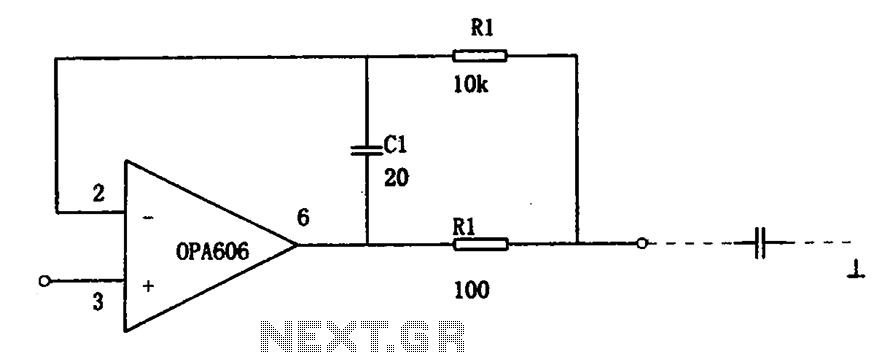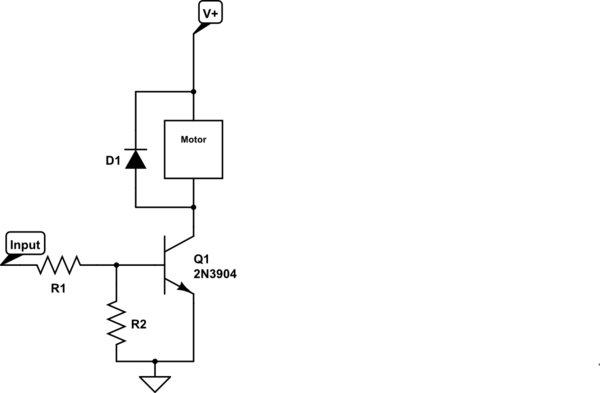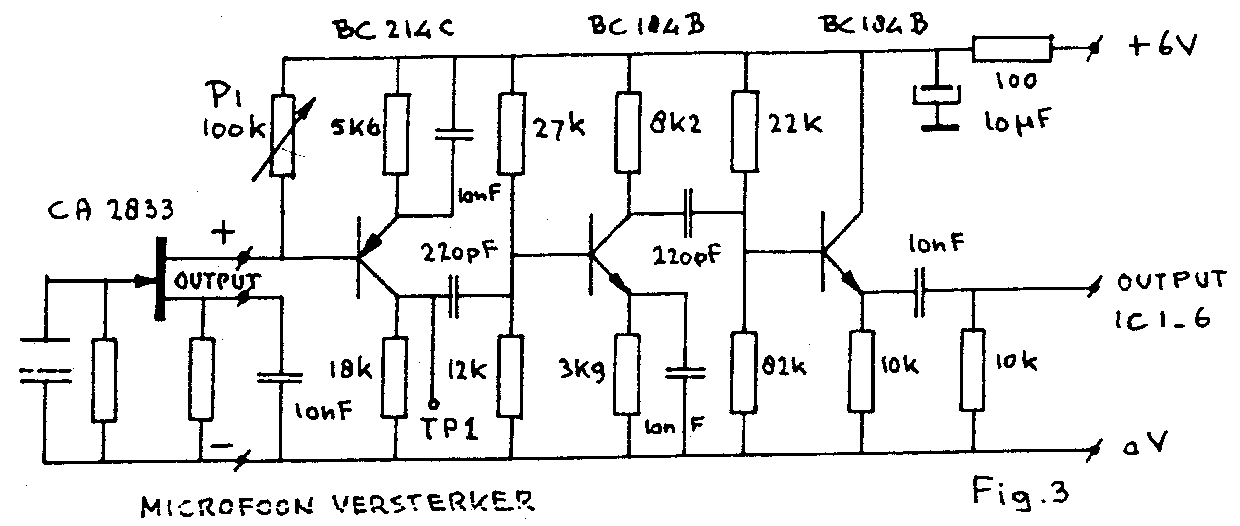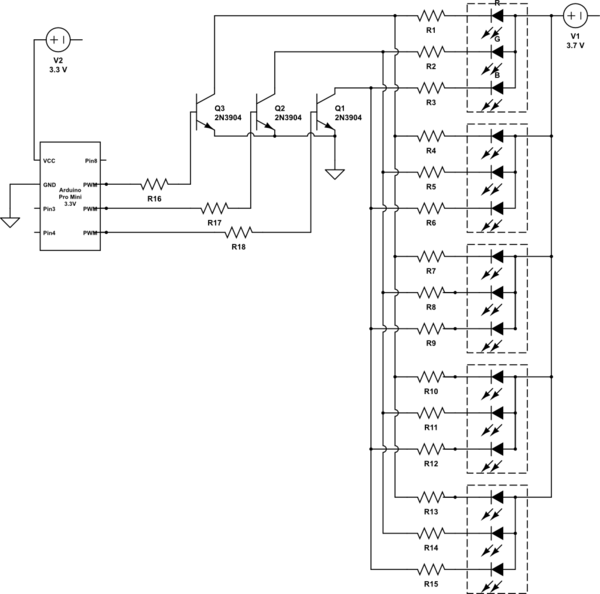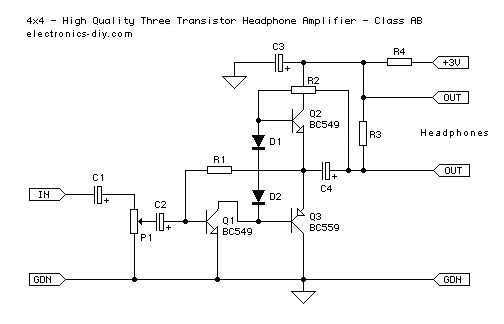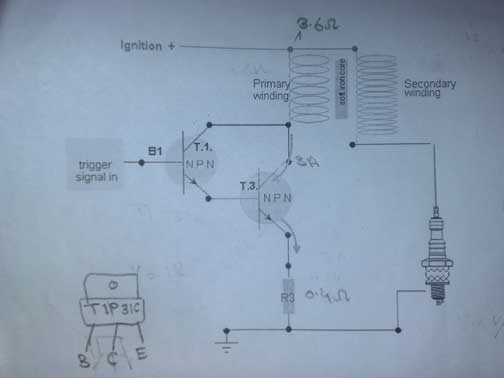
Leaky Transistor Buffer
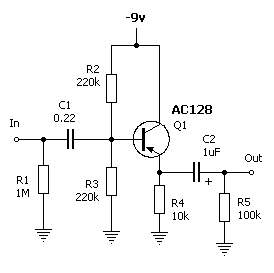
The wah pedal operates before the amplifier but produces a low volume and a scratchy sound when the pedal is rocked back and forth. It functions correctly without the buffer. When placed in front of a Fuzz Face, no sound is transmitted when the fuzz is engaged. After investigating, it was determined that the transistor had been soldered incorrectly; it was replaced with an AC128. Despite an increase in volume, the issue with sound when the fuzz is engaged persisted, along with the scratchy noise. Upon realizing that the circuit was designed for positive ground, it was reconstructed using the correct negative ground schematic, resulting in proper functionality.
The described wah pedal circuit is designed to be integrated into a guitar effects setup, primarily functioning to modulate the frequency response of the guitar signal. The initial issues encountered—low volume and scratchy sound—suggest potential problems with the transistor orientation or the grounding configuration. Transistors play a crucial role in amplifying the signal, and incorrect installation can lead to significant performance degradation.
In this case, the replacement of the transistor with an AC128 is a critical step, as this component is known for its favorable characteristics in audio applications. The increase in volume indicates that the transistor is now functioning to some extent, but the remaining issues with the fuzz effect suggest that the wah pedal's output stage may still be misaligned with the expected input of the Fuzz Face.
The identification of a positive ground circuit being incompatible with a negative ground setup is essential. Many effects pedals are designed with a specific grounding scheme, and mixing these can lead to operational failures. By reconstructing the circuit according to the negative ground schematic, the wah pedal can now properly interface with other effects and the amplifier, ensuring that the signal path is optimized for the best audio fidelity.
In a well-designed wah pedal circuit, the input stage typically includes a buffer to maintain signal integrity, while the wah effect is achieved through a variable bandpass filter controlled by the foot pedal. The output stage must be compatible with subsequent effects in the signal chain, such as fuzz or distortion pedals, which often have specific input impedance requirements.
For optimal performance, it is advisable to double-check all component orientations, ensure proper grounding, and verify that all connections are secure and free from solder bridges or cold joints. Regular maintenance and testing with an oscilloscope can help diagnose any further issues that may arise in the signal chain, ensuring that the wah pedal performs reliably in various configurations.The wah will work before the amplifier but sounds very low in volume and it sounds scratchy when the wah is rocked back and forth. The wah is fine without the buffer. In front of a fuzz face, with the fuzz face on, no sound passes Bizarre indeed. I`m going to go back to it and if I wired something wrong. Does the leakage and bias matter with the device Okay, I found part of the problem. I soldered in the transistor the wrong way, so, I removed it and put in a AC128. Unfortunately, I`m still having problems. There is an increase in volume but still no sound with the fuzz engaged, and it is still scratchy. I`m stumped. Ugh! Do I feel like an idiot. I realized that this is positive ground and won`t work properly in a negative ground circuit. I took it apart and rebuilt it using the proper schematic (negative ground) posted here at the beginning of this post. And, it works perfectly. 🔗 External reference
The described wah pedal circuit is designed to be integrated into a guitar effects setup, primarily functioning to modulate the frequency response of the guitar signal. The initial issues encountered—low volume and scratchy sound—suggest potential problems with the transistor orientation or the grounding configuration. Transistors play a crucial role in amplifying the signal, and incorrect installation can lead to significant performance degradation.
In this case, the replacement of the transistor with an AC128 is a critical step, as this component is known for its favorable characteristics in audio applications. The increase in volume indicates that the transistor is now functioning to some extent, but the remaining issues with the fuzz effect suggest that the wah pedal's output stage may still be misaligned with the expected input of the Fuzz Face.
The identification of a positive ground circuit being incompatible with a negative ground setup is essential. Many effects pedals are designed with a specific grounding scheme, and mixing these can lead to operational failures. By reconstructing the circuit according to the negative ground schematic, the wah pedal can now properly interface with other effects and the amplifier, ensuring that the signal path is optimized for the best audio fidelity.
In a well-designed wah pedal circuit, the input stage typically includes a buffer to maintain signal integrity, while the wah effect is achieved through a variable bandpass filter controlled by the foot pedal. The output stage must be compatible with subsequent effects in the signal chain, such as fuzz or distortion pedals, which often have specific input impedance requirements.
For optimal performance, it is advisable to double-check all component orientations, ensure proper grounding, and verify that all connections are secure and free from solder bridges or cold joints. Regular maintenance and testing with an oscilloscope can help diagnose any further issues that may arise in the signal chain, ensuring that the wah pedal performs reliably in various configurations.The wah will work before the amplifier but sounds very low in volume and it sounds scratchy when the wah is rocked back and forth. The wah is fine without the buffer. In front of a fuzz face, with the fuzz face on, no sound passes Bizarre indeed. I`m going to go back to it and if I wired something wrong. Does the leakage and bias matter with the device Okay, I found part of the problem. I soldered in the transistor the wrong way, so, I removed it and put in a AC128. Unfortunately, I`m still having problems. There is an increase in volume but still no sound with the fuzz engaged, and it is still scratchy. I`m stumped. Ugh! Do I feel like an idiot. I realized that this is positive ground and won`t work properly in a negative ground circuit. I took it apart and rebuilt it using the proper schematic (negative ground) posted here at the beginning of this post. And, it works perfectly. 🔗 External reference
